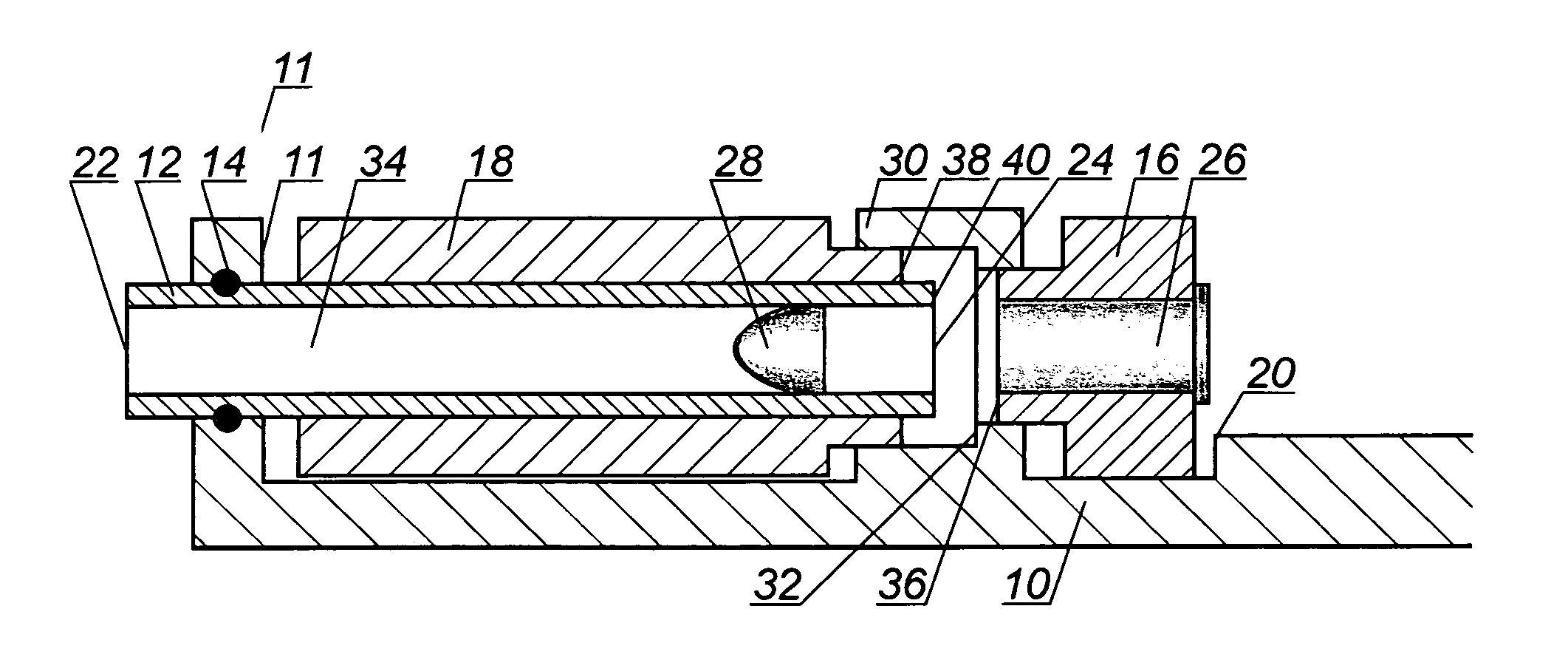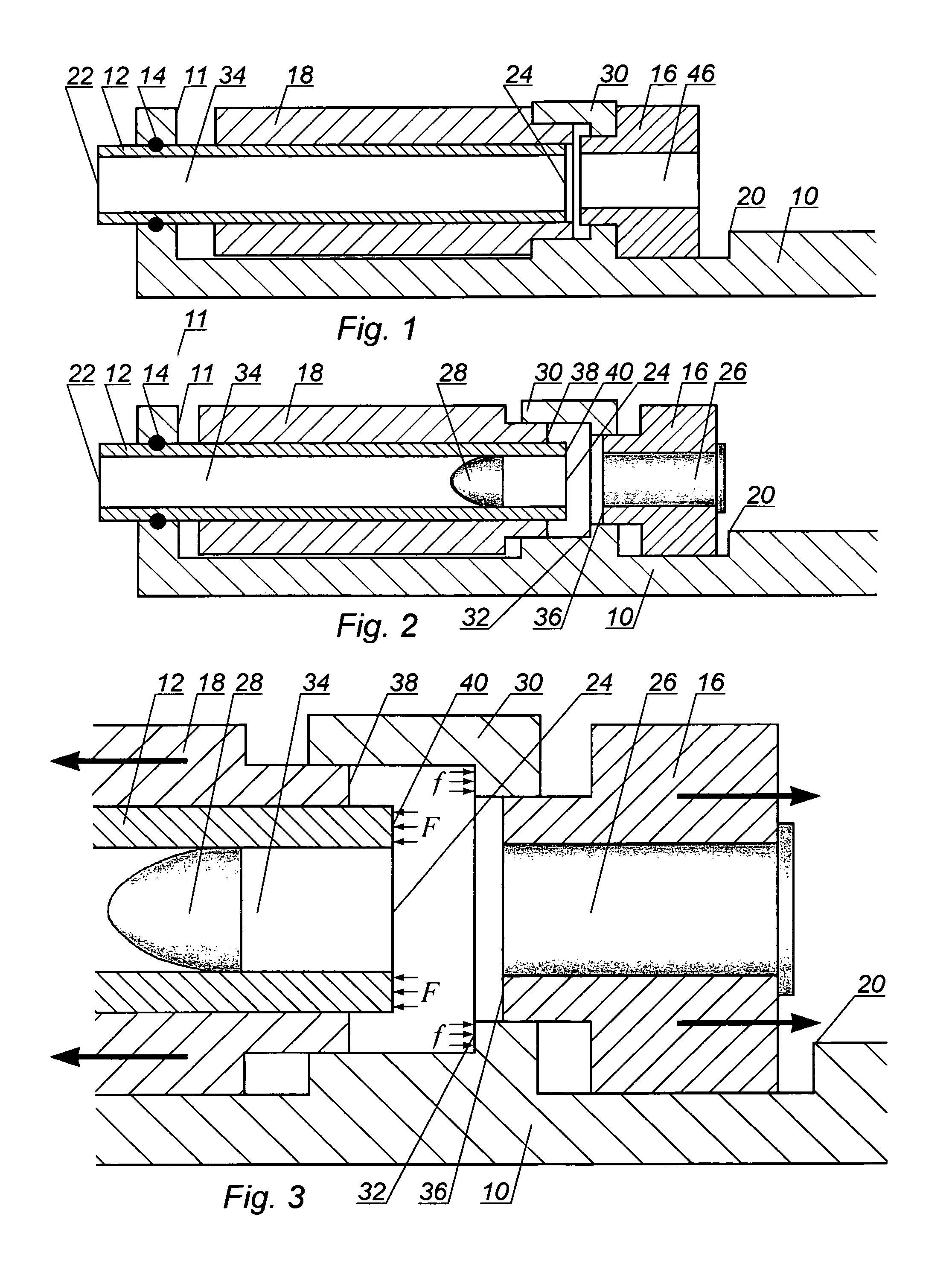Firearm apparatus and method
a technology of firearms and projectiles, which is applied in the field of firing projectiles, can solve the problems of improving the core functional features of firearms, poor shooting accuracy of today's firearms, and reducing the accuracy of shooting, so as to minimize the angle of departure, minimize the displacement of firearms during firing, and achieve high shooting accuracy
- Summary
- Abstract
- Description
- Claims
- Application Information
AI Technical Summary
Benefits of technology
Problems solved by technology
Method used
Image
Examples
case embodiment
FIG. 12—First Special-Case Embodiment
[0075]A first special-case embodiment shown in FIG. 12 is very similar in design and operation to the preferred embodiment described above and shown in FIGS. 1 through 11, therefore only aspects specific to this embodiment will be discussed here in detail.
[0076]The firearm schematically shown in FIG. 12 features parts that partially form the expandable chamber with surfaces slanted at the same angle. In other words, cartridge container working surface 36, countermass back surface 38, and breech end surface 40 have the slanted surfaces defining the same angle with respect to the axis line of barrel bore 34. This structural feature results in the following operational effect: when gas from the deflagrating propellant fills the expandable chamber during firing, all surfaces exposed to the gas are acted upon by gas pressure of substantially the same magnitude. Unlike the design of the expandable chamber shown in FIG. 11, the expandable chamber in the...
PUM
 Login to View More
Login to View More Abstract
Description
Claims
Application Information
 Login to View More
Login to View More - R&D
- Intellectual Property
- Life Sciences
- Materials
- Tech Scout
- Unparalleled Data Quality
- Higher Quality Content
- 60% Fewer Hallucinations
Browse by: Latest US Patents, China's latest patents, Technical Efficacy Thesaurus, Application Domain, Technology Topic, Popular Technical Reports.
© 2025 PatSnap. All rights reserved.Legal|Privacy policy|Modern Slavery Act Transparency Statement|Sitemap|About US| Contact US: help@patsnap.com



